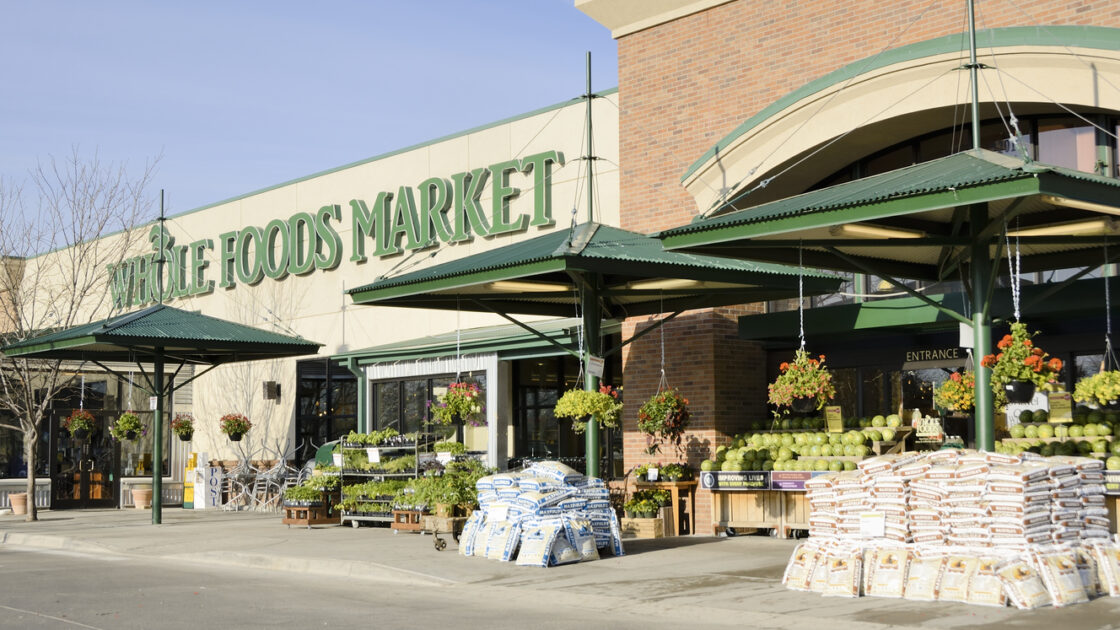Whole Foods Market’s First Month Sales on Amazon Exceed Forecast

An estimated $1.6 million worth of Whole Foods Market private label products have been sold through Amazon in the first month since the online retailer bought the upmarket natural food chain.
In the first week, sales through Amazon’s platforms (Amazon.com, Amazon Fresh, Prime Now, and Prime Pantry) were about $500,000 via Amazon, with inventory issues in the following weeks leading to sales of about $300,000 per week before picking up again. It should account for about $700 million in the first year, as Amazon is expected to see roughly $4.3 billion in sales this year from its private label product family (including the Echo and AmazonBasics).
“Whole Foods’ reputation for quality puts it in a unique position to tackle online grocery,” reports Business Insider. “Consumers’ main issue with online grocery is the inability to see and choose their own products, and many grocers have struggled to overcome this hurdle. Whole Foods, however, is known for its high-quality products and stringent standards, meaning consumers may be more confident purchasing the company’s offerings online. In fact, over the past month, Amazon successfully sold snacks, candy, frozen produce, turkey breast, and beverages from Whole Foods, showing that shoppers will buy a variety of products from the grocer sight unseen. That could indicate the organic-focused company is well poised to see greater success online than its competitors.”
Amazon is reportedly more focused on increasing its online sales of Whole Foods private label products instead of increasing foot traffic, which was four percent below average last month for the chain’s 400+ locations in the U.S.
Efforts to maximize store space for items including other Amazon products could also mean a decreased presence of local or small-scale producers in Whole Foods Market locations, a move that many criticize as stripping the chain of its character and community focus.
“It’s worth noting that such changes could alter the core Whole Foods experience, so Amazon will have to take care to ensure its adjustments do not alienate shoppers, or erode the company’s key differentiator — its quality,” Business Insider notes. “This will be critical as the online retailer takes aim at the online and retail grocery markets, which are projected to be worth as much as $100 billion and $400 billion, respectively, by 2025.”
The traditional supermarket is seeing a decline in sales and decreases in overall foot traffic. According to Business Insider, close to 9,000 retail food stores could close this year – a number twice as much as the closures of the previous two years combined. At the same time, Amazon boasts 53 percent of online sales growth in the U.S. last year.
It’s a sign Business Insider says points to the rise of omnichannel fulfillment methods “that leverage their store locations and in-store inventory in order to better compete in e-commerce.” Programs like Instacart and other direct-from-store purchases, as well as click-and-collect options allow shoppers to decrease their time spent in-store as well as save money on select purchases.
“However, few retailers have mastered these new fulfillment services,” Business Insider notes. “While these companies have spent years optimizing their supply chain and logistics networks for delivering goods to their stores or directly to customers’ doorsteps, most have yet to figure out how to profitably bring their store locations into the e-commerce delivery process.”
Find Jill on Twitter and Instagram
Related on Organic Authority
Amazon’s Changes to Whole Foods Include Abandoning Local Connections
Whole Foods and Amazon Merger Shakes Up the Grocery World
Planned 365 by Whole Foods Market Store Openings Stalled as Organic Retailer Awaits Its Fate

